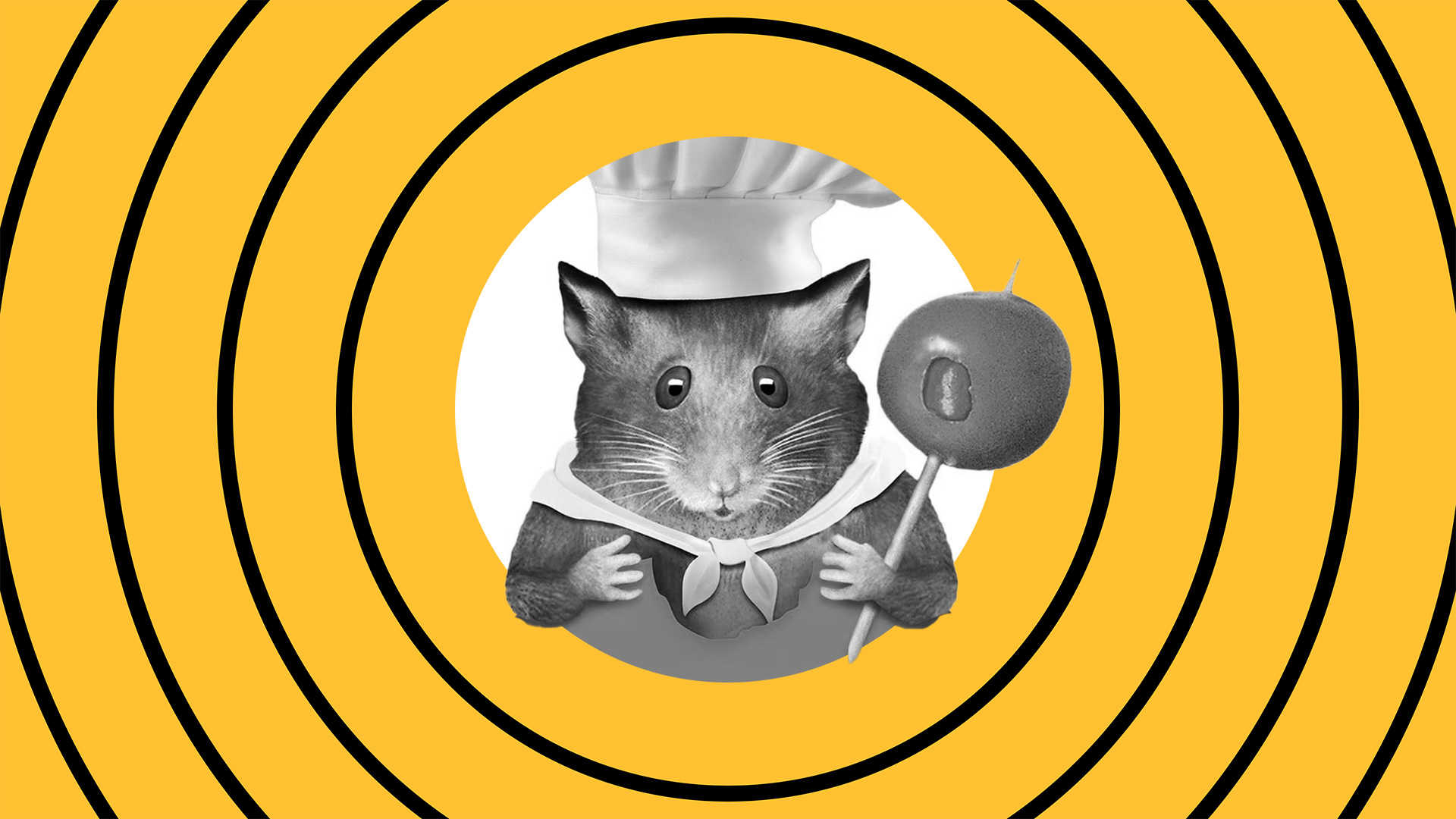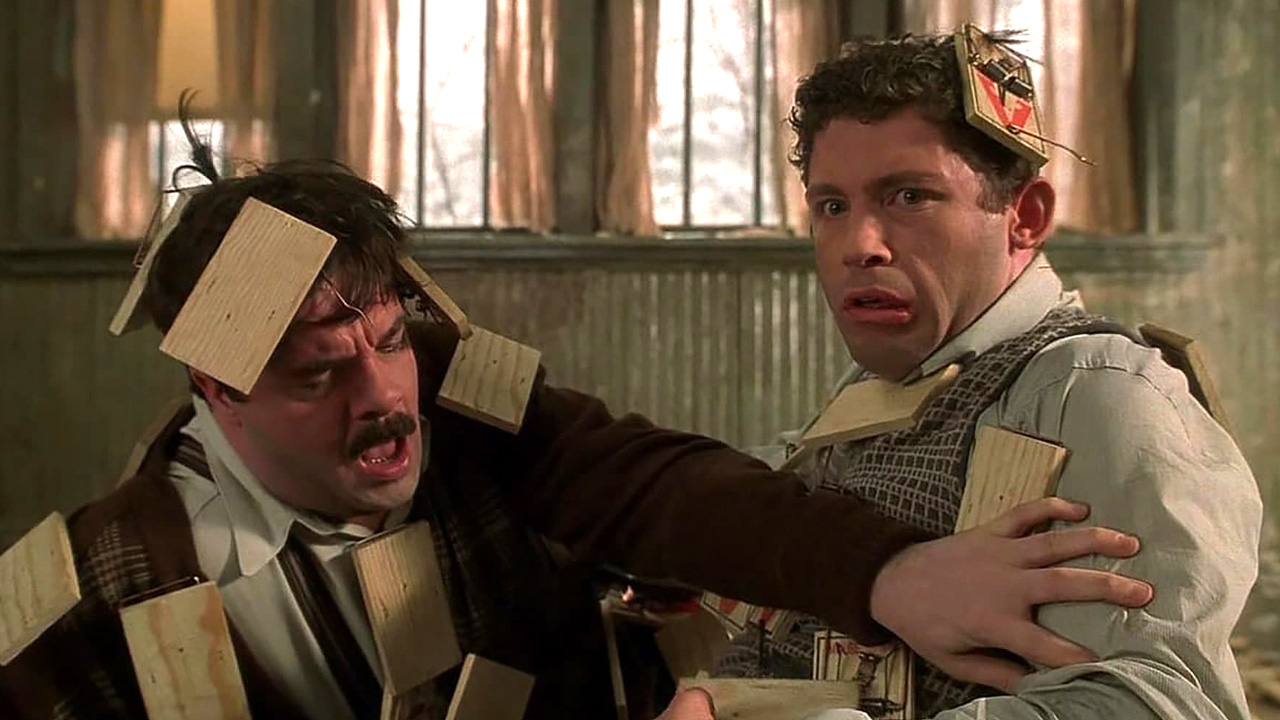I Kid You Not: 1997’s Mousehunt is a slapstick comedy masterpiece

Who said family films aren’t cinema? In his column I Kid You Not, Liam Maguren critically evaluates the excellence in kids flicks and writes them into the history books. In celebration of the film’s 25th anniversary, Liam writes about 1997’s Mousehunt and why it’s a slapstick comedy masterpiece.
Slapstick doesn’t age as quickly as most forms of comedy. Bypassing the need for social context and cultural references, it’s a type of humour that appeals to a more primal funny bone.
It comes in endless variations—foot to banana peel, mallet to head, football to groin—refined by pinpoint performances, deliberate sound design, and exceptional timing. Classic skits from legends of the trade can still elicit hard laughs to this very day.
Slapstick is such a comedy staple, we don’t even register its existence in modern-day blockbusters (heck, it changed the whole trajectory of the Thor series). However, in today’s cinema landscape, there are almost no live-action films dedicated purely to slapstick comedy. This is why we must remember and re-evaluate one of the last masterpieces of the genre—1997’s Mousehunt.
An exceptionally cast Nathan Lane and Lee Evans play Ernie and Lars, two broke brothers who inherit their deceased father’s modest yarn factory. Lars wants to keep the humble business alive, but is too spineless to speak up. Ernie wants nothing to do with it, too full of himself to see any potential in the company.
However, when they discover their other big inheritance, a rare and expensive mansion, both their eyes turn into dollar signs. To sell it, they need to repair it, and the only thing stopping them is a mouse. Easy money, right? Absolutely not, for this mouse is wrath incarnate.
It’s a classic Tom and Jerry setup if you swapped Tom for Home Alone‘s The Sticky Bandits. Ernie is the Joe Pesci of the pair, eternally frustrated and money-hungry, which makes Lars the Daniel Stern equivalent, a lanky goof submissive to his brother’s bossiness. They’re more in-depth than Harry and Marv though, with Ernie’s gigantic ego the perfect fuel for comedic fire while Lars’ quiet desire to do right by his father keeps the story anchored with just enough humanity.
That sounds like a lot of plot and character stuff to wade through before the actual mouse-hunting comes into play, but Mousehunt doesn’t waste a second of its 98min running time, opening with an uncompromising funeral gag sure to surprise anyone unfamiliar with Mousehunt‘s slightly dark tone.
The movie opens with an amusingly ominous quote: “A world without string is chaos.” The brothers carry their deceased father to the funeral car. They bicker. Lars loses his grip. The coffin torpedoes down the stairs. It hits the car. The dead body goes flying. Trebuchet-style. Into an open manhole. Nothin’ but net.
This is Mousehunt. You are not prepared for it.
Doing the groundwork to provide ample motivation (and a mountain of stakes) for Ernie and Lars, the story gradually builds towards the film’s headline attraction—the titular hunting of the mouse. Like a snowball down Mt Everest, they gradually draw larger-than-life side characters into their scheme, including a truly sublime turn from Christopher Walken as the world’s most intense and dedicated pest exterminator.
But what about the mouse itself? What’s its motivation? Its backstory? In one of the film’s masterstrokes, the little critter is kept as simple as possible, a perfect straight man to Lane and Evans’ goofery. The Zen Road Runner to their over-thinking Coyote.
In the production notes, director Gore Verbinski explained: “We tried to create a world in which the most sane creature is a creature. The mouse doesn’t have a character arc; he’s intentionally one-dimensional. In the crazy world depicted in the film, he’s just a mouse, pure and simple.”
One key scene, which sees the mouse in a cute makeshift bedroom, tells you all you need to know about the tiny fellow: it’s content with its straightforward life. So when these two house-flipping ratbags start ripping it apart, they’ve declared war.
Demonstrating a nigh sadistic ability to exact revenge, the mouse’s strategic (and comedic) genius is never explained—neither in dialogue nor in the mouse’s performance. By refusing to personify the mouse, the film maximises the utter disbelief milked by Lane and Evans.
Verbinski emphasised that he “didn’t want some cigar-smoking, tuxedo-wearing mouse character,” for this very reason. “I wanted a simple mouse that was cute but believable.” That might not be a merchandise-able decision, but it was the best decision for the movie. Sparse use of CGI and animatronic puppetry from the mighty Stan Winston Studios push the believability when needed, but for the most part, the character’s performance relied on veteran animal trainer Boone Narr.
The special effects work is one of many resources in Mousehunt‘s filmmaking arsenal, all aimed at getting the biggest laugh possible. When executing a gag, Verbinski clearly considered every cinematic technique at his disposal to craft the comedy to knife-edge sharpness. The mouse trap sequence beautifully demonstrates this.
The opening shot already says plenty. DOP Phedon Papamichael, who later earned Oscar nominations for shooting 2013’s Nebraska and 2020’s The Trial of the Chicago 7, floods the bottom half of the screen with mouse traps while positioning the disgruntled Ernie and Lars far away to emphasise the enormity of the room. They’re also framed by an arch, visually suggesting that they’re actually the ones trapped in this foreboding situation.
When the mouse enters the scene, so does the magnificently bespoke score by Alan Silvestri, a composer best known for his Oscar-nominated work on Forrest Gump and the triumphant theme music for The Avengers. Sly and cheeky but also classy and orchestral, Silvestri uses music here to chase the comedic build-up like a spark on a bomb fuse as the mouse scurries through the kitchen.
The majority of the scene features a real-life mouse (a fine performance, by the way) to which the editor Craig Wood, a frequent Verbinski collaborator and regular cutter of MCU films, gifts a generous amount of screen time in the sequence, allowing the audience to wonder what’s going to happen like a G-rated Final Destination. The mouse’s CGI “stunt double” gets the sparse quick-cuts, so as to not break the illusion too much, which is probably the only way you could get a mouse to dive onto a spoon that catapults a cherry onto the army of traps. The scene heightens with this cherry spinning between the traps, and to capitalise on the comedic tension, Woods holds these shots as long as possible.
Papamichael assists with a slow-zooming bird’s eye shot.
Silvestri salts the suspense with selective strings.
There’s a subtle but necessary creaking sound, the audible calm before the storm.
Then the cherry stalk strikes the trap. The editing quickens. The score heightens. The camera’s positioned frighteningly to Lars and Ernie’s point of view. This is mayhem. This is comedy. This is cinema.

Aside from the mouse, there were no digital effects in this sequence. Hundreds of traps were manually set and rigged to a wiring system. Once triggered, they’d all have to be individually reset. It took several takes. The sheer dedication to this one gag speaks to the overall care and attention to detail present in this seemingly silly production.
If I were to write a thesis on Mousehunt (and boy am I tempted), I could dissect every scene to illustrate the wealth of cinematic techniques powering the comedy. In the realm of slapstick, the film is a masterpiece.
And yet, Mousehunt wasn’t exactly a critical hit. For every reviewer who enjoyed it, there seemed to be another who couldn’t even tolerate it, and while I don’t think it’s healthy to rank opinions, I do gently wonder if Mousehunt was heavily misunderstood at the time. Humour, after all, is a hugely subjective thing, and slapstick is too often brushed aside as inane silliness fit only for children.
But the craft simply cannot be denied, and Verbinski knew exactly what he was doing and how to do it. This knack for cinematic comedy is a skill he’d flex continually for the Pirates of the Caribbean series, his Oscar-winning animated film Rango, and another misunderstood slice of gold—The Lone Ranger.
In many ways, Mousehunt feels like both a throwback to the early days of slapstick and the final days of it in the live-action cinema landscape. In this interview, Lane expressed this feeling perfectly, calling the film, “Laurel and Hardy as seen through the eyes of the Coen brothers.”




















